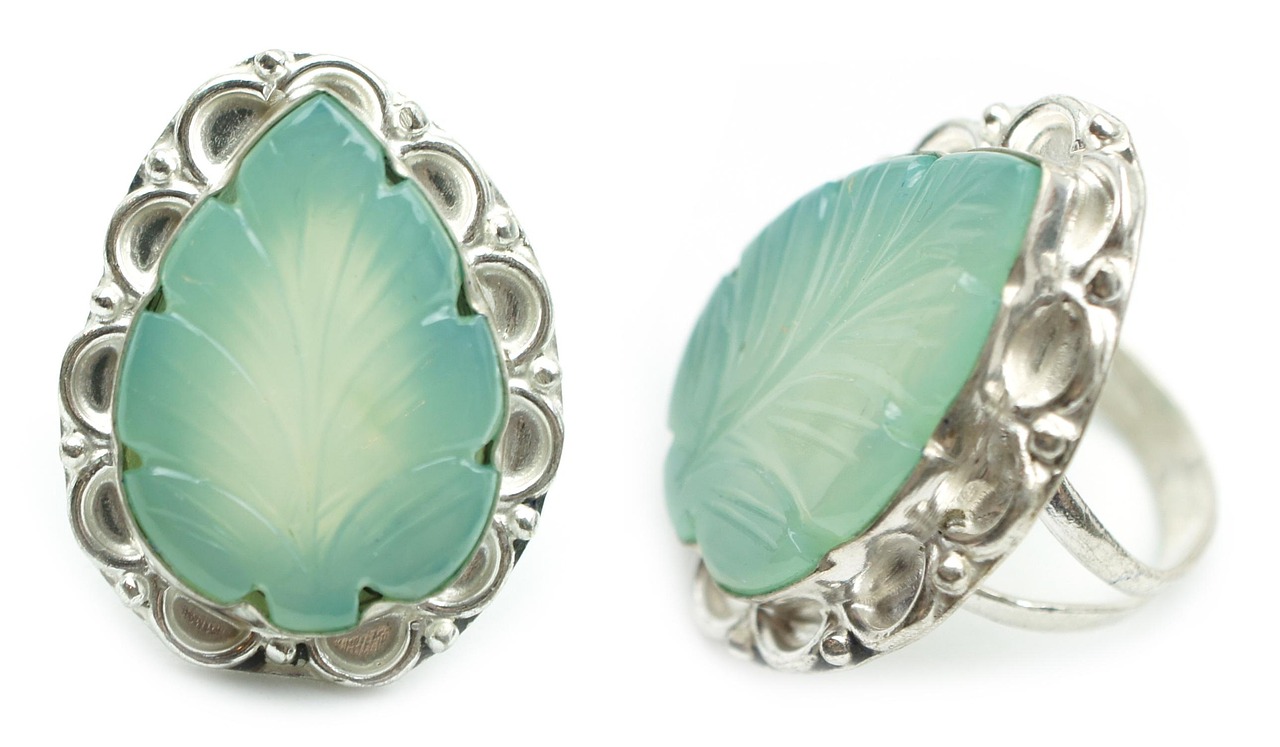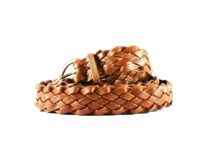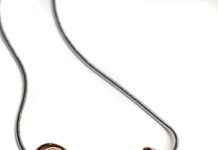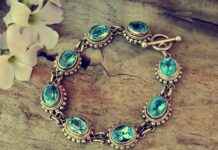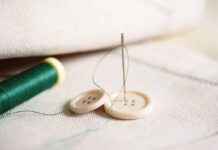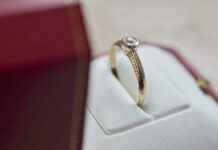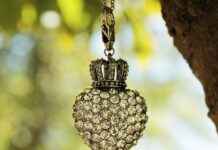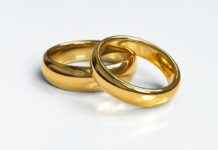In recent years, vintage jewelry has garnered significant attention from collectors and investors alike. This growing interest can be attributed to various factors that make vintage pieces not only aesthetically pleasing but also financially rewarding. This article delves into the reasons why investing in vintage jewelry is a wise financial decision, while also providing insights into market trends and practical tips for potential investors.
The Growing Popularity of Vintage Jewelry
There has been a remarkable resurgence in the popularity of vintage jewelry, fueled by contemporary fashion trends and a desire for unique, one-of-a-kind pieces. As consumers increasingly seek individuality in their accessories, vintage jewelry offers a distinctive alternative to mass-produced items. This trend is crucial for potential investors to understand, as it influences market demand.
Factors That Increase Vintage Jewelry Value
Several key factors contribute to the valuation of vintage jewelry:
- Brand Recognition: High-end brands like Cartier or Tiffany & Co. often command higher prices due to their prestigious reputation.
- Rarity: Limited edition pieces or those from specific eras are highly sought after, making them more valuable.
- Condition: Well-maintained items typically fetch higher prices than those needing restoration.
Market Trends in Vintage Jewelry
Staying informed about current market trends is essential for investors. Popular styles, such as Art Deco and Mid-Century Modern, are currently in demand, indicating potential investment opportunities. Additionally, seasonal fluctuations can affect pricing, with certain times of the year yielding higher sales.
Where to Buy Vintage Jewelry
Knowing where to purchase vintage jewelry is vital. Key sources include:
- Auctions and Estate Sales: These venues often feature rare finds at competitive prices.
- Online Marketplaces: The internet has broadened access to vintage jewelry, allowing investors to explore a wide range of options.
Tips for Investing in Vintage Jewelry
To invest wisely in vintage jewelry, consider the following tips:
- Research and Education: Familiarize yourself with the history and characteristics of vintage pieces.
- Networking with Experts: Establish relationships with jewelry appraisers and experts to gain insights into quality and value.
Conclusion: The Future of Vintage Jewelry Investment
Investing in vintage jewelry presents unique opportunities for both personal enjoyment and financial gain. With the right knowledge and strategy, it can be a rewarding venture for collectors and investors alike. As the market continues to evolve, those who remain informed will be best positioned to capitalize on this growing trend.

The Growing Popularity of Vintage Jewelry
In recent years, vintage jewelry has experienced a remarkable revival, capturing the attention of fashion enthusiasts and collectors alike. This resurgence can be attributed to a combination of evolving fashion trends and a growing appreciation for unique, one-of-a-kind pieces that tell a story. As consumers increasingly seek individuality in their accessories, vintage jewelry offers a perfect solution, allowing wearers to express their personal style while also investing in items of historical significance.
One of the main driving forces behind this trend is the shift in consumer behavior. Many individuals are now prioritizing sustainability and ethical consumption, leading them to choose vintage items over mass-produced alternatives. This shift not only supports environmental sustainability but also encourages the preservation of craftsmanship and artistry that is often lost in modern production methods.
Furthermore, the allure of vintage jewelry lies in its diversity. From the intricate designs of the Art Deco era to the bold statements of the Mid-Century Modern period, there is a vast array of styles to choose from. Each piece carries its own history and character, making it a fascinating addition to any collection. This diversity appeals to a wide range of consumers, from seasoned collectors to casual buyers looking for something special.
Additionally, the rise of social media platforms has played a significant role in popularizing vintage jewelry. Influencers and fashion bloggers often showcase their vintage finds, inspiring their followers to explore similar avenues. This exposure has made vintage jewelry more accessible and desirable, further fueling its popularity.
For potential investors, understanding the factors driving this trend is essential. The increasing demand for vintage jewelry not only enhances its aesthetic appeal but also contributes to its potential as a lucrative investment. As the market continues to grow, savvy investors who recognize the value of these unique pieces stand to benefit significantly.
In conclusion, the growing popularity of vintage jewelry reflects a broader cultural shift towards individuality, sustainability, and appreciation for craftsmanship. As this trend continues to evolve, it presents exciting opportunities for collectors and investors alike.

Factors That Increase Vintage Jewelry Value
Investing in vintage jewelry can be an exciting venture, but understanding the factors that contribute to its value is essential for making informed decisions. Several key elements play a significant role in determining the worth of vintage pieces, including brand recognition, rarity, and condition. Let’s explore these factors in more detail.
- Brand Recognition: The brand of a jewelry piece significantly influences its market value. Renowned brands such as Cartier, Tiffany & Co., and Van Cleef & Arpels often command higher prices due to their established reputation and historical significance. Collectors are generally willing to pay a premium for pieces from these iconic brands, making them attractive investments.
- Rarity: The scarcity of a piece greatly enhances its desirability. Limited edition items or those produced in small quantities are particularly sought after. For instance, a vintage piece from a discontinued collection can fetch a higher price due to its exclusivity. Investors should look for unique designs or items with a compelling backstory, as these attributes can significantly increase value over time.
- Condition: The overall condition of vintage jewelry is paramount in determining its value. Pieces that are well-preserved, with minimal wear and tear, are typically more valuable than those requiring extensive restoration. It’s advisable for investors to carefully assess the condition, looking for signs of damage or repair that could affect the piece’s integrity and marketability.
- Provenance: The history of ownership, or provenance, can also impact the value of vintage jewelry. Items with a notable past, such as those previously owned by celebrities or featured in significant events, often attract higher bids at auctions. Documenting the history of a piece can enhance its appeal to potential buyers.
In conclusion, understanding these factors—brand recognition, rarity, condition, and provenance—can help investors make informed decisions when purchasing vintage jewelry. By considering these elements, collectors can enhance their portfolios and potentially see significant returns on their investments.
Brand Recognition and Its Impact
Brand recognition plays a pivotal role in determining the value of vintage jewelry. When it comes to investing in jewelry, the brand often serves as a hallmark of quality and prestige. High-end brands like Cartier, Tiffany & Co., and Van Cleef & Arpels not only have a rich history but also a loyal following, making their pieces highly sought after in the market.
One of the reasons these brands command higher prices is their craftsmanship. Each piece is meticulously designed and crafted, often featuring unique techniques that set them apart from mass-produced items. This level of artistry contributes to their overall value and desirability among collectors and investors alike.
Moreover, the historical significance of certain brands can enhance their value. For instance, jewelry that has been worn by celebrities or featured in significant events can fetch a premium price. This aspect of brand recognition creates a narrative that adds to the allure of the piece, making it more than just an accessory but a part of history.
Another crucial factor is the exclusivity of the brand. Limited edition pieces or those from specific collections can become particularly valuable over time. Investors often seek out these rare items, as their scarcity tends to drive up demand and, consequently, their market price.
In conclusion, understanding the impact of brand recognition on vintage jewelry is essential for anyone looking to invest wisely. By focusing on reputable brands known for their quality, craftsmanship, and historical significance, investors can make informed decisions that enhance the value of their collections.
Iconic Designers and Their Legacy
Iconic designers such as Cartier and Tiffany & Co. have made a lasting impact on the world of jewelry, not only through their exquisite designs but also through their rich histories. These brands are synonymous with luxury and craftsmanship, making their pieces highly sought after by collectors and investors alike.
The historical significance of jewelry from these designers cannot be overstated. Cartier, founded in 1847, has a legacy of creating pieces for royalty and celebrities, which adds a unique allure to their items. Similarly, Tiffany & Co., established in 1837, is renowned for its distinctive blue boxes and engagement rings, symbolizing love and commitment. This historical context enhances the value of their jewelry, as each piece tells a story of elegance and prestige.
Craftsmanship is another critical factor that elevates the status of jewelry from these iconic brands. Each item is meticulously crafted, often using the finest materials, including high-quality diamonds and precious metals. The artisans behind these creations employ techniques passed down through generations, ensuring that every piece is not just a product but a work of art. This dedication to quality and detail contributes significantly to the investment potential of their jewelry.
Moreover, pieces from these designers often appreciate in value over time, particularly those that are limited editions or unique designs. The exclusivity of certain collections can lead to increased demand, making them a wise investment choice for those looking to diversify their portfolios.
In conclusion, the jewelry from iconic designers like Cartier and Tiffany & Co. holds significant value due to their historical importance, unparalleled craftsmanship, and the potential for appreciation. For collectors and investors, acquiring pieces from these brands is not merely a purchase; it is an investment in a legacy of artistry and excellence.
Limited Editions and Exclusivity
Limited editions and exclusivity are vital concepts in the world of vintage jewelry, significantly influencing their desirability and market value. These pieces are often produced in small quantities, making them exceptionally rare and highly coveted by collectors.
The allure of limited edition jewelry lies in its scarcity. When a piece is released as a limited edition, it creates a sense of urgency among buyers. This urgency can lead to a bidding frenzy, especially if the piece is associated with a well-known designer or brand. As time passes, the limited availability often translates into an increase in value. Collectors recognize that owning such pieces is not just about aesthetics but also about investment potential.
Moreover, limited edition pieces often come with a story or a unique design element that sets them apart from mass-produced items. This uniqueness can enhance their appeal, as collectors seek items that reflect their personal style and taste. Additionally, the emotional connection to a limited edition piece can drive its value even higher, as buyers are often willing to pay a premium for something that resonates with them on a deeper level.
To illustrate, consider the following factors that contribute to the value of limited edition vintage jewelry:
- Scarcity: The fewer pieces available, the more valuable they become.
- Brand Prestige: High-end brands often release limited editions, enhancing their allure.
- Historical Significance: Pieces tied to important events or milestones can command higher prices.
- Condition: The better the condition, the more valuable the piece.
In conclusion, investing in limited edition vintage jewelry can be a strategic move for collectors and investors alike. Understanding the factors that contribute to their value can help buyers make informed decisions, ensuring that their investments appreciate over time.
Condition and Restoration
The condition of vintage jewelry is one of the most critical aspects that influences its overall valuation. Collectors and investors alike recognize that the state of preservation can significantly affect both the desirability and market price of these pieces. In this section, we will delve deeper into why condition matters and how it impacts the value of vintage jewelry.
When assessing vintage jewelry, well-preserved items typically command higher prices compared to those that require extensive restoration. This is primarily because well-maintained pieces retain their original charm and integrity, making them more appealing to buyers. A piece that has not been altered or repaired often holds historical significance that can be lost during restoration processes.
| Condition Factors | Impact on Value |
|---|---|
| Originality | High – Original pieces are more sought after. |
| Signs of Wear | Medium – Minor wear can be acceptable, but excessive damage lowers value. |
| Restoration Quality | Varies – Professional restoration can enhance value, but poor quality can detract. |
Additionally, the restoration process itself can be a double-edged sword. While some restoration can help preserve a piece and make it more marketable, overzealous repairs can lead to a loss of value. It is essential for investors to ensure that any restoration work is done by reputable professionals who understand the nuances of vintage jewelry.
In conclusion, the condition of vintage jewelry plays a pivotal role in determining its market value. Collectors should prioritize pieces that are in good condition or those that have been restored with care. By focusing on quality and preservation, investors can make informed decisions that enhance their collections and maximize their potential returns.

Market Trends in Vintage Jewelry
Investing in vintage jewelry requires a keen understanding of the current market trends. As styles evolve and consumer preferences shift, staying informed can significantly impact an investor’s success. Recognizing the popular styles and eras can guide purchasing decisions, ensuring that investments are both aesthetically pleasing and financially sound.
In recent years, the vintage jewelry market has experienced a notable revival. This resurgence is fueled by a growing appreciation for unique, one-of-a-kind pieces that tell a story. Many collectors and investors are drawn to the distinctive craftsmanship and historical significance that vintage jewelry offers. As a result, certain styles are becoming increasingly sought after, making it essential for investors to stay updated on these trends.
Current Popular Styles
- Art Deco: Known for its geometric patterns and bold colors, Art Deco jewelry remains a favorite among collectors.
- Mid-Century Modern: This style features clean lines and innovative designs, making it a popular choice for modern investors.
- Victorian: Pieces from this era are valued for their intricate designs and romantic themes, appealing to a wide audience.
Seasonal Market Fluctuations
The vintage jewelry market is not static; it can experience seasonal fluctuations that affect availability and pricing. Certain times of the year, such as the holiday season or major auctions, may see increased demand, leading to higher prices. Investors should be mindful of these trends to time their purchases effectively.
Conclusion
Understanding market trends in vintage jewelry is crucial for making informed investment decisions. By keeping an eye on popular styles and seasonal fluctuations, investors can enhance their chances of acquiring valuable pieces that appreciate over time. With the right knowledge and approach, investing in vintage jewelry can be both rewarding and enjoyable.
Current Popular Styles
in vintage jewelry reflect not only aesthetic preferences but also investment potential. Among the most sought-after styles today are Art Deco and Mid-Century Modern, both of which have captured the attention of collectors and investors alike.
The Art Deco style, which flourished in the 1920s and 1930s, is characterized by its bold geometric shapes, vibrant colors, and luxurious materials. Pieces from this era often feature intricate designs and high-quality craftsmanship, making them not only visually appealing but also valuable. Investors are particularly drawn to Art Deco jewelry for its historical significance and the timeless elegance it embodies.
Similarly, the Mid-Century Modern style, popular from the 1940s to the 1960s, emphasizes clean lines, organic shapes, and innovative materials. This style represents a shift towards more casual and functional designs, which resonates with contemporary tastes. Mid-Century Modern pieces often include unique gemstones and minimalist aesthetics, appealing to both vintage enthusiasts and modern collectors.
| Style | Era | Key Characteristics | Investment Potential |
|---|---|---|---|
| Art Deco | 1920s – 1930s | Geometric shapes, vibrant colors, luxurious materials | High |
| Mid-Century Modern | 1940s – 1960s | Clean lines, organic shapes, innovative materials | Growing |
Investing in these styles is not just about the aesthetic appeal; it is also a strategic financial decision. The demand for Art Deco and Mid-Century Modern jewelry continues to rise, and as more collectors enter the market, the value of these pieces is expected to increase. Understanding these trends can guide investors in making informed choices about their acquisitions.
In conclusion, the current popularity of Art Deco and Mid-Century Modern styles presents a unique opportunity for investors. By focusing on these in-demand styles, collectors can enhance their portfolios while enjoying the beauty and history of vintage jewelry.
Seasonal Market Fluctuations
Understanding the Seasonal Market Fluctuations
The vintage jewelry market is not immune to seasonal trends, which can significantly affect sales and pricing. Investors and collectors alike should be aware of these fluctuations to make informed decisions.
Seasonal Peaks in Demand
Throughout the year, certain seasons can see a marked increase in interest and sales of vintage jewelry. For instance, holidays such as Valentine’s Day, Christmas, and anniversaries often lead to higher sales volumes as people seek unique gifts. During these times, prices can also rise due to increased demand.
Factors Influencing Seasonal Trends
- Fashion Trends: The cyclical nature of fashion can impact which styles are in demand, leading to fluctuations in sales.
- Economic Conditions: Economic stability or uncertainty can influence consumer spending habits, affecting how much individuals are willing to invest in vintage pieces.
- Collector Events: Events such as antique fairs and auctions can create spikes in interest, especially if they feature rare or sought-after items.
Price Variability
Prices for vintage jewelry can vary significantly based on the time of year. For example, pieces that are highly sought after during peak seasons may see inflated prices, while off-peak times could lead to discounts or lower prices. Investors should monitor these trends closely to capitalize on the best buying opportunities.
Conclusion
In conclusion, understanding the seasonal fluctuations in the vintage jewelry market is essential for anyone looking to invest. By recognizing peak times for sales and the factors influencing these trends, investors can make more strategic decisions and potentially enhance their returns.
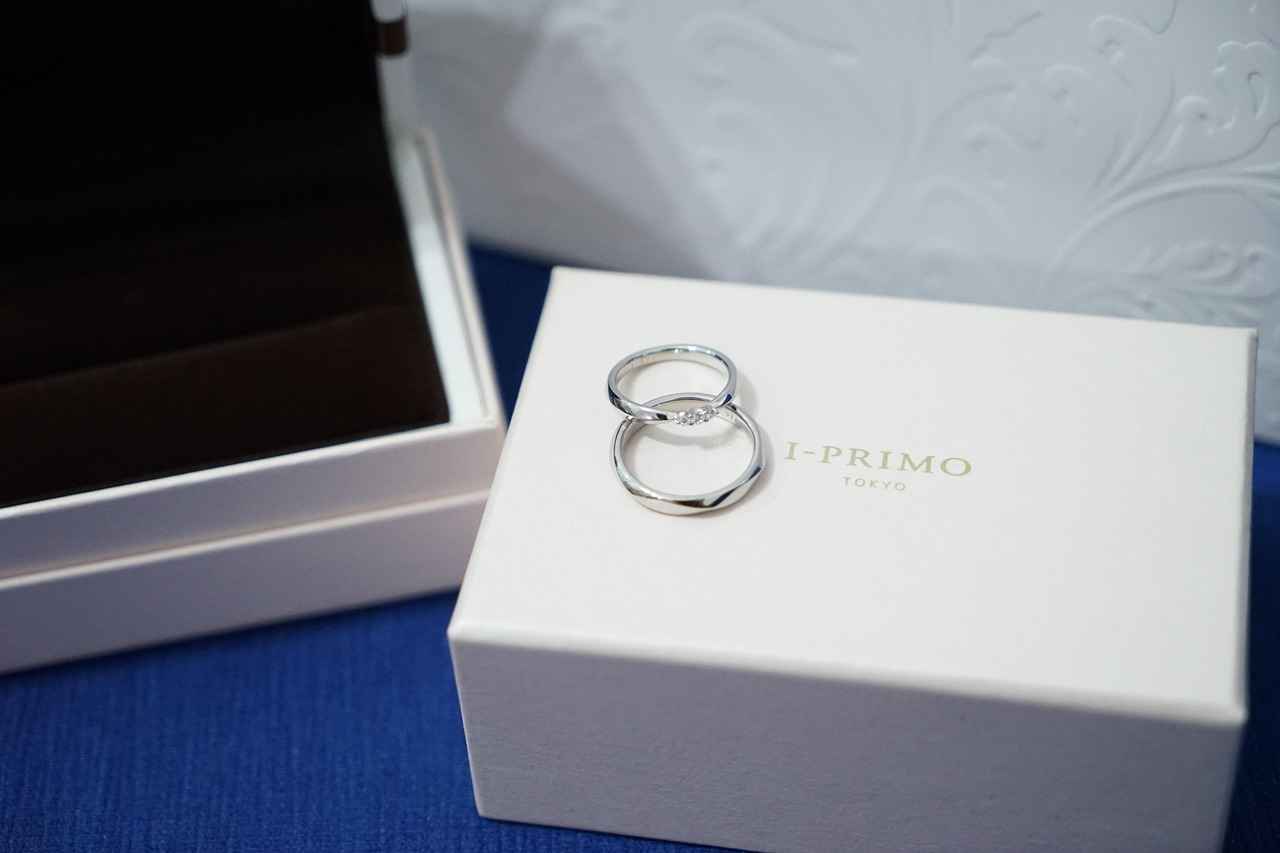
Where to Buy Vintage Jewelry
Knowing where to purchase vintage jewelry is vital for investors looking to add unique pieces to their collections. The market for vintage jewelry is diverse, with various sources offering unique opportunities for acquiring valuable items. Here, we explore some of the best places to find vintage jewelry, ensuring that investors can make informed choices.
- Auctions: Auctions are a premier destination for vintage jewelry enthusiasts. They often feature rare and one-of-a-kind pieces that can be acquired at competitive prices. Attending reputable auction houses can provide investors with access to high-quality items.
- Estate Sales: Estate sales can be treasure troves for vintage jewelry. These sales often include items from individuals who have collected jewelry over the years, offering a chance to find unique pieces with rich histories.
- Online Marketplaces: The rise of online shopping has transformed how investors find vintage jewelry. Websites like eBay, Etsy, and specialized vintage jewelry platforms provide a vast selection of items. However, it’s crucial to research sellers and read reviews to ensure authenticity.
- Antique Shops: Local antique shops can be excellent places to discover vintage jewelry. Many shop owners have extensive knowledge of their inventory and can provide insights into the pieces’ history and value.
- Jewelry Shows and Fairs: Attending jewelry shows and fairs allows investors to browse a wide range of vintage pieces in one location. These events often feature expert dealers who can offer valuable information about the jewelry.
In conclusion, understanding where to buy vintage jewelry is essential for anyone looking to invest in this market. By exploring various sources such as auctions, estate sales, online marketplaces, antique shops, and jewelry shows, investors can find unique and valuable pieces that enhance their collections.
Auctions and Estate Sales
are becoming increasingly popular venues for collectors and investors looking to acquire unique vintage jewelry pieces. These events often showcase a variety of rare items that can be both aesthetically pleasing and financially rewarding.
One of the primary advantages of participating in auctions and estate sales is the opportunity to find one-of-a-kind items that are not available in traditional retail settings. Many of these pieces come with rich histories, adding to their allure and value. Investors can often find stunning jewelry that reflects different eras and styles, which can be a significant draw for collectors.
Additionally, competitive pricing is a hallmark of these sales. Unlike retail environments where prices are fixed, auctions allow buyers to set their own limits, potentially leading to great deals. This competitive atmosphere can drive prices down, allowing savvy investors to acquire valuable items at lower costs.
| Advantages of Auctions and Estate Sales | Details |
|---|---|
| Unique Finds | Access to rare vintage pieces with historical significance. |
| Competitive Pricing | Potential for lower prices compared to retail. |
| Expert Appraisal | Items are often appraised, providing buyers with insights into value. |
Moreover, many auctions and estate sales feature expert appraisers who can provide valuable insights into the authenticity and value of the pieces. This can help investors make informed decisions and avoid potential pitfalls associated with purchasing vintage jewelry.
In conclusion, present excellent opportunities for investors looking to expand their collections. With the right research and strategy, participants can uncover valuable treasures that not only enhance their collections but also serve as wise financial investments.
Online Marketplaces
The rise of has transformed the way collectors and investors approach vintage jewelry. No longer confined to local shops or occasional estate sales, enthusiasts can now explore an expansive selection of vintage pieces from the comfort of their own homes. This accessibility has opened up numerous opportunities for both seasoned investors and newcomers alike.
One of the most significant advantages of these platforms is the variety they offer. Investors can browse through thousands of listings, featuring everything from Art Deco rings to Victorian brooches, all at their fingertips. This vast selection allows individuals to compare prices, styles, and conditions, making it easier to find the perfect piece that fits their investment strategy.
Additionally, online marketplaces often provide detailed descriptions and high-resolution images, enabling buyers to assess the quality and authenticity of items before making a purchase. Many platforms also include user reviews and ratings, which can help in determining the reliability of sellers and the value of the jewelry being offered.
Investors should also be aware of the importance of research when utilizing online platforms. Familiarizing oneself with current market trends and understanding the history behind specific pieces can significantly enhance investment decisions. For example, knowing that certain designers or styles are currently in demand can guide buyers toward making more informed purchases.
Moreover, many online marketplaces offer authentication services, ensuring that the vintage jewelry being sold is genuine. This added layer of security can be particularly beneficial for those who may be hesitant about purchasing high-value items online.
In conclusion, online marketplaces have revolutionized the vintage jewelry market, providing unprecedented access and opportunities for investors. By leveraging these platforms wisely, individuals can build impressive collections while potentially reaping significant financial rewards.
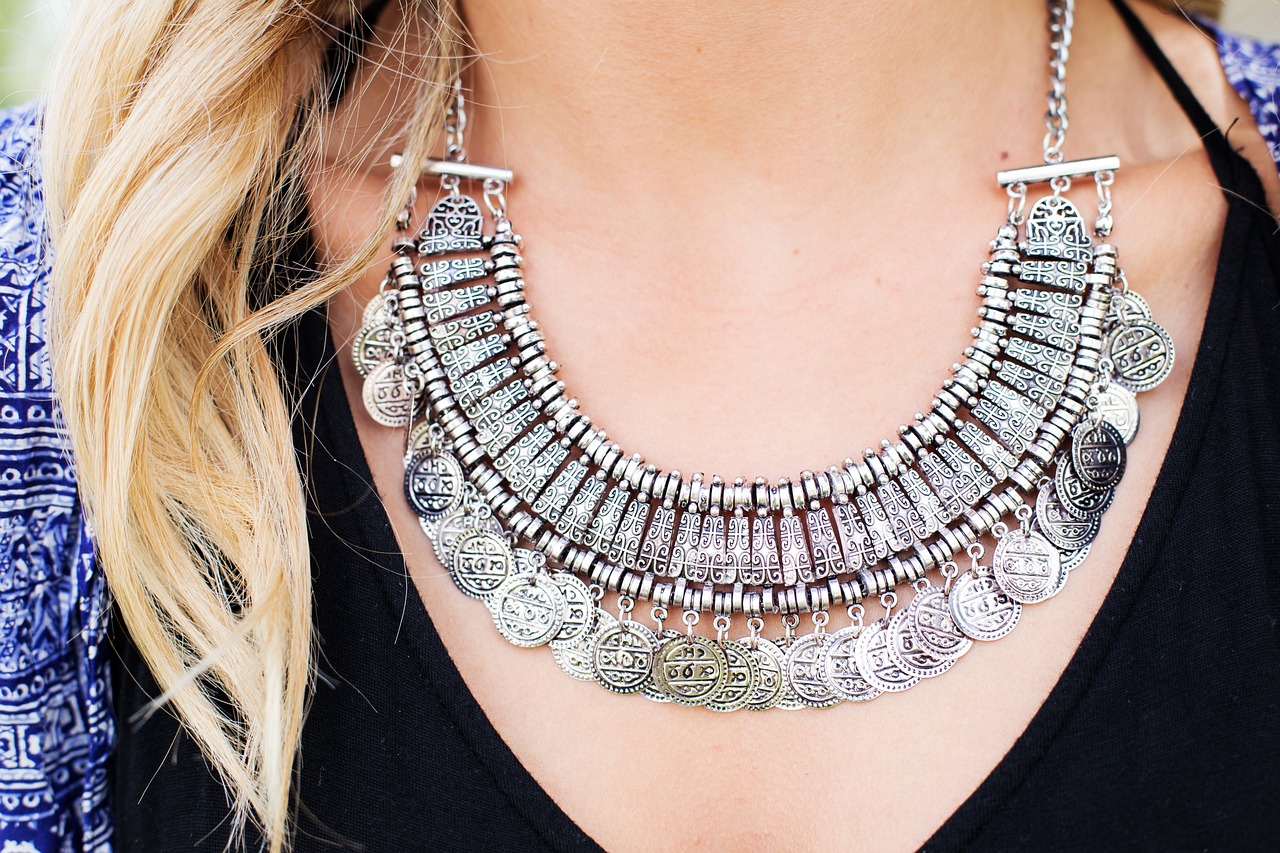
Tips for Investing in Vintage Jewelry
Investing in vintage jewelry can be a rewarding venture, but it requires careful planning and a strategic approach. Here are some essential tips to consider before making a purchase.
- Conduct Thorough Research: Before diving into the vintage jewelry market, it’s crucial to educate yourself about different styles, eras, and materials. Familiarize yourself with the history of vintage jewelry and the characteristics that define various periods.
- Understand Market Trends: Keep an eye on current market trends and popular styles. For instance, pieces from the Art Deco era or Mid-Century Modern designs are highly sought after. Being aware of these trends can guide your purchasing decisions.
- Assess the Condition: The condition of a piece significantly affects its value. Look for items that are well-preserved and require minimal restoration. If a piece has been damaged, consider the cost of repairs when evaluating its worth.
- Network with Experts: Building relationships with jewelry appraisers, dealers, and collectors can provide valuable insights. They can help you identify quality pieces and avoid potential pitfalls.
- Consider Brand and Designer: Jewelry from renowned brands or iconic designers often holds greater value. Research the brands that have a strong reputation in the vintage market, such as Cartier or Tiffany & Co..
- Explore Various Buying Channels: Vintage jewelry can be found in various places, including auctions, estate sales, and online marketplaces. Each option has its advantages and potential risks, so explore multiple channels to find the best deals.
- Set a Budget: Establish a clear budget before making any purchases. This will help you stay focused and prevent overspending on impulse buys.
By following these tips, you can navigate the vintage jewelry market with confidence and make informed investment decisions that align with your financial goals.
Research and Education
play a pivotal role in understanding vintage jewelry, ensuring that collectors and investors make informed decisions. The intricate history and unique characteristics of vintage pieces can significantly influence their value and desirability in the market.
To begin with, familiarizing oneself with the historical context of vintage jewelry is essential. Different eras, such as the Victorian, Art Nouveau, and Art Deco periods, each have distinct styles, materials, and craftsmanship techniques. For example:
- Victorian Jewelry: Often characterized by intricate designs and sentimental motifs, reflecting the romantic ideals of the time.
- Art Nouveau: Known for its organic forms and flowing lines, often inspired by nature.
- Art Deco: Featuring geometric shapes and bold colors, this style represents the glamour of the 1920s and 1930s.
Understanding these characteristics allows investors to identify authentic pieces and appreciate their historical significance. Additionally, knowing the materials used in vintage jewelry, such as gold, silver, and precious stones, is crucial. The quality and origin of these materials can greatly affect the piece’s value.
Furthermore, it is important to stay updated on market trends. Following auction results, attending jewelry fairs, and participating in online forums can provide valuable insights into what styles are currently in demand. This knowledge can help investors make timely and strategic purchases.
Lastly, consulting with experts can enhance understanding and confidence in purchasing decisions. Engaging with appraisers and experienced collectors can provide clarity on the authenticity and value of vintage jewelry.
In conclusion, a thorough process is vital for anyone looking to invest in vintage jewelry. By understanding its history, characteristics, and market trends, investors can navigate the complexities of this unique market more effectively.
Networking with Experts
in the vintage jewelry field is an essential strategy for anyone looking to make informed investments. By establishing connections with jewelry experts and appraisers, investors can gain invaluable insights that can significantly enhance their purchasing decisions. This collaborative relationship not only provides access to expert knowledge but also opens doors to exclusive opportunities in the market.
One of the primary benefits of networking with professionals is the ability to identify quality pieces. Experts can offer guidance on what to look for in vintage jewelry, including details about craftsmanship, materials, and historical significance. They can help investors distinguish between authentic vintage pieces and reproductions, ensuring that every purchase is a sound investment.
Moreover, jewelry appraisers can provide accurate valuations for pieces, which is crucial for understanding the potential return on investment. Knowing the market value of a piece can help investors negotiate better prices and avoid overpaying. This is particularly important in a market where trends can shift rapidly, and values can fluctuate based on various factors.
Additionally, attending industry events, such as trade shows and exhibitions, allows investors to meet and connect with experts face-to-face. These interactions can lead to fruitful collaborations and mentorship opportunities, further enriching an investor’s knowledge base. Furthermore, experts often have access to exclusive sales or early previews of upcoming collections, giving investors a competitive edge.
In conclusion, building relationships with jewelry experts and appraisers is not just a beneficial practice; it is a vital component of successful vintage jewelry investing. By leveraging their expertise, investors can make informed decisions, identify quality pieces, and ultimately enhance their portfolios. The knowledge gained through these networks can be the difference between a novice collector and a seasoned investor.
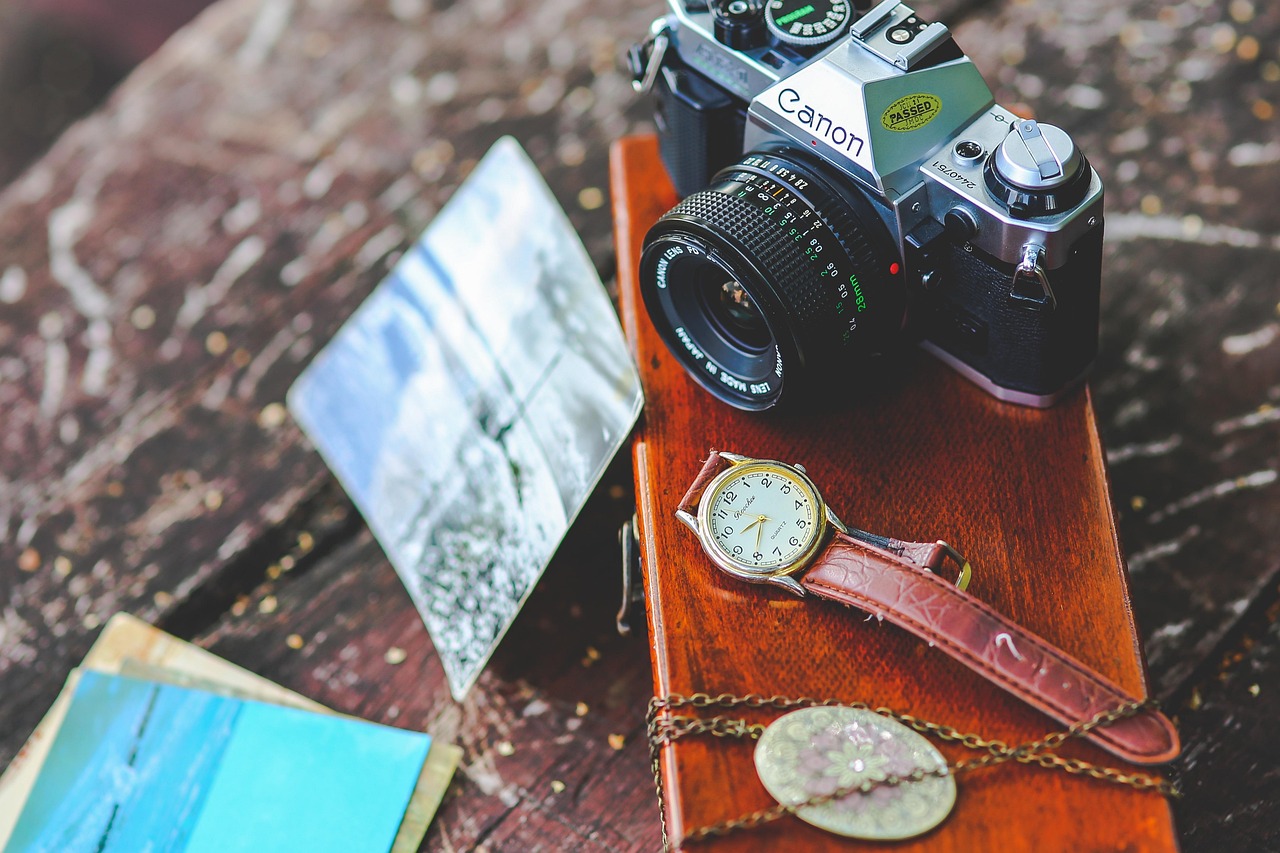
Conclusion: The Future of Vintage Jewelry Investment
Investing in vintage jewelry presents a unique blend of aesthetic pleasure and potential financial rewards. As the market for vintage pieces continues to grow, understanding the nuances of this investment avenue becomes essential for both collectors and investors.
One of the primary reasons vintage jewelry is gaining traction is the increasing demand for unique and one-of-a-kind pieces. Unlike mass-produced contemporary jewelry, vintage items tell a story and often come with a rich history, making them more desirable to buyers. This trend is further fueled by the rise of sustainable fashion, where consumers are looking for ways to reduce their environmental footprint by choosing pre-owned items.
Rarity is another critical factor that enhances the value of vintage jewelry. Pieces that are limited in production or those that have unique design elements tend to appreciate over time. Investors should focus on acquiring items from renowned designers or brands, as these often hold their value better than lesser-known pieces.
Moreover, the condition of the jewelry plays a significant role in its valuation. Well-maintained items are typically more sought after. Investors should consider the cost of restoration when purchasing pieces that require repairs, as this can affect overall profitability.
Staying informed about current market trends is vital for successful investment. Knowledge about which styles are in demand, such as Art Deco or Victorian pieces, can guide purchasing decisions. Additionally, seasonal fluctuations can impact prices, so timing your purchases can yield better returns.
In conclusion, investing in vintage jewelry is not just about acquiring beautiful pieces; it is also a strategic financial decision. With thorough research, a keen eye for quality, and an understanding of market dynamics, collectors and investors can enjoy both the beauty and potential financial gains that vintage jewelry offers.
Frequently Asked Questions
- What makes vintage jewelry a good investment?
Vintage jewelry is not just beautiful; it often appreciates in value over time. Unique designs, brand recognition, and historical significance can make these pieces highly sought after, turning a simple purchase into a valuable asset.
- How can I determine the value of a vintage jewelry piece?
To assess the value, consider factors like brand, rarity, condition, and market trends. Consulting with experts or appraisers can also provide insights into what makes a piece valuable and how much it might be worth.
- Where should I look for vintage jewelry?
There are several great places to find vintage jewelry, including auctions, estate sales, and online marketplaces. Each option offers unique opportunities to discover hidden gems and potentially valuable pieces.
- What styles of vintage jewelry are currently popular?
Styles like Art Deco and Mid-Century Modern are particularly in demand right now. Staying updated on current trends can help you make informed purchasing decisions and find pieces that are likely to appreciate in value.
- Is it necessary to restore vintage jewelry?
While restoration can enhance the value of a piece, it’s crucial to ensure that any work done is appropriate and doesn’t compromise the original integrity. Well-preserved items generally hold more value than those needing extensive repairs.

